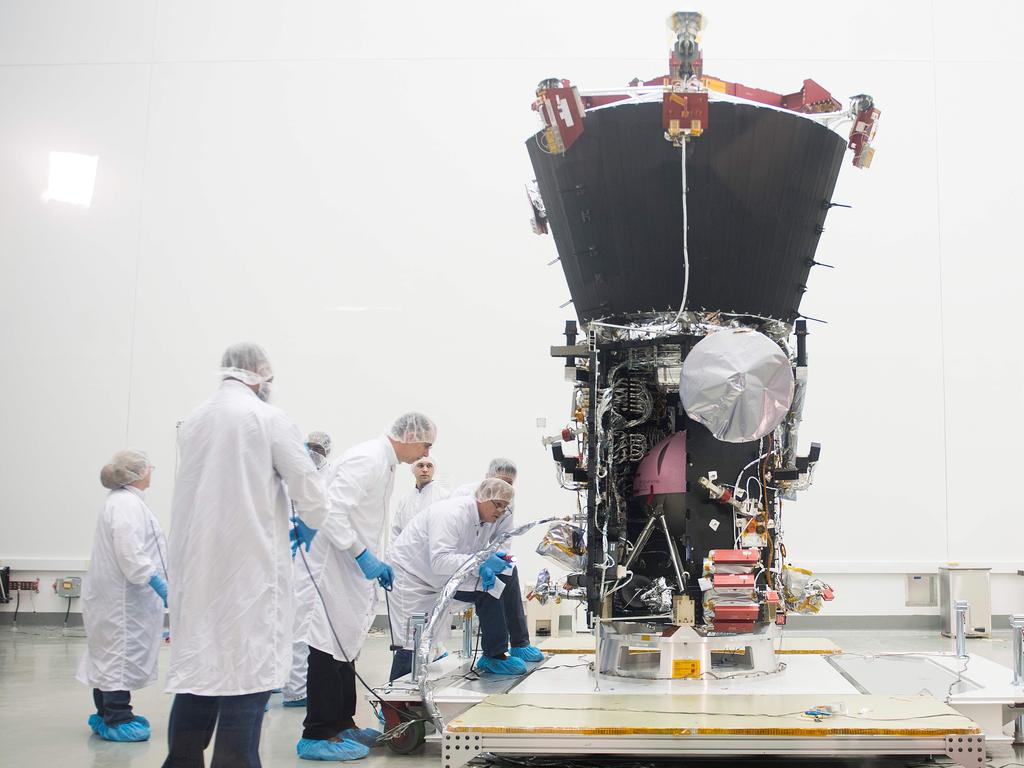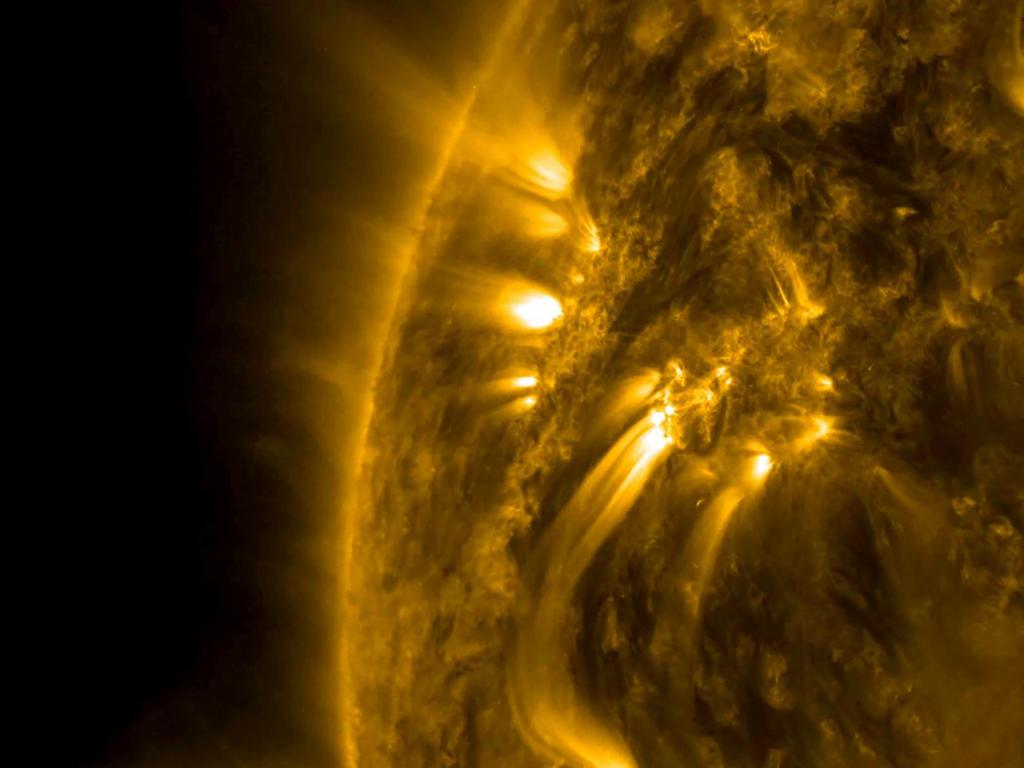Solar probe gets closer to the Sun by going faster
NASA’s Parker Solar Probe has broken its own record as the fastest man-made object in history as its speed brings it closer and closer to the Sun.

READING LEVEL: GREEN
A rugged* NASA probe has soared across space and ‘touched the Sun’ in a truly astronomical feat.
The 482,781 km per hour Parker Solar Probe will get even closer – and is already officially the fastest man-made object ever created.
In truth, there are many different ways to ‘touch’ the Sun; the star is multi-layered and its effects extend far from the core.
In this case, the probe has glanced* the Sun’s toasty outer atmosphere.
It got as close as around 9,656,064 km from Earth’s host star – but that’s not the only record.
The probe has also become the fastest man-made object, travelling at a mind-blowing 532,000 km per hour.
That breaks its own record set in February 2020, when the probe achieved speeds of 393,044 km per hour.

The speed is brain-boggling: the probe could circumnavigate* Earth in under five minutes and reach the Moon in less than an hour.
NASA’s probe is using an orbit that takes it around Venus, using the planet’s gravity to bring it ever closer to the Sun.
With each pass, the probe’s total speed is ramping up.
NASA’s hardy craft will eventually approach as close as 6.9 million kilometres.
And it will ultimately reach speeds of up to 692,2018 km per hour – around 0.064 per cent the speed of light.
During the trip, the probe endures temperatures of 1,300C.
The Parker Solar Probe is one of NASA’s most exciting missions.
It launched back in 2018 to observe the outer corona* of the Sun – from a closer viewpoint than any previous probe.
NASA has tracked eight passes around the Sun of a planned 24 trips.
The mission is due to end in 2025, but could be extended if NASA chooses.
Eventually, it’s possible that the probe will slowly spiral into the Sun, ultimately destroying the craft.

Sun Facts
- The Sun is a huge star that lives at the centre of our solar system
- It’s a near-perfect sphere of hot plasma* and provides most of the energy for life on Earth
- It measures a staggering 1,392,083 kilometres across – making it 109 times bigger than Earth
- But its weight is 330,000 times that of Earth, and accounts for almost all of the mass in the Solar System
- The Sun is mostly made up of hydrogen (73 per cent), helium (25 per cent) and a number of other elements like oxygen, carbon and iron
- Its surface temperature is around 5,505C
- Scientists describe the Sun as being “middle-aged”
- The Sun formed 4.6 billion years ago, and has been in its current state for around four billion years
- It’s expected that it will remain stable for another five billion years
- It doesn’t have enough mass to explode as a supernova*
- Instead, it is expected to turn a huge red giant*
- During the red giant phase, it will be so big that it will engulf* Mercury, Venus and Earth
- Eventually it will turn into an incredibly hot white dwarf* – and will stay that way for trillions of years
This story was first published on The Sun and is republished with permission.
GLOSSARY
- rugged: tough
- glanced: touched
- circumnavigate: travel all the way around something
- corona: the outer layer of the sun and other stars
- plasma: an ionised gas, in the case of stars at very high temperatures
- supernova: a star that becomes much brighter after exploding
- red giant: a luminous star with a large radius but low mass, late in its life
- engulf: surround, swallow
- hot white dwarf: what stars become once they have used up their nuclear fuel
EXTRA READING
Asteroid sample lands safely in South Australia
NASA rover touches down on Mars
NASA tests Moons suits for 2024 Artemis mission
QUICK QUIZ
- How close was the probe to the Sun in this latest mission?
- What was the probe’s record-breaking speed?
- How long would it take the probe to circumnavigate the Earth?
- When is the mission due to end?
- How many times bigger than Earth is the Sun?
LISTEN TO THIS STORY
CLASSROOM ACTIVITIES
1. Infographic
Choose 5 facts from this news story that you think are the most important or interesting. Create an infographic that incorporates images and these facts. Your infographic should enable a viewer who only has one minute to look at it, to come away with a basic knowledge of what the story was about.
Time: allow 30 minutes to complete this activity
Curriculum Links: English; Science; Visual Arts
2. Extension
The Parker Solar Probe has so far travelled at a top speed of 532,000 kms per hour. What does this equate to per minute? What about per second?
Time: allow 5 minutes to complete this activity
Curriculum Links: English; Mathematics
VCOP ACTIVITY
Grammar and VCOP
The glossary of terms helps you to understand and learn the ambitious vocabulary being used in the article. Can you use the words outlined in the glossary to create new sentences? Challenge yourself to include other VCOP (vocabulary, connectives, openers and punctuation) elements in your sentence/s. Have another look through the article, can you find any other Wow Words not outlined in the glossary?

